Some of the 20th century’s greatest string players were critically lauded in their day, but are now almost forgotten. Tully Potter celebrates some of the era’s more obscure star musicians in this article from October 2013
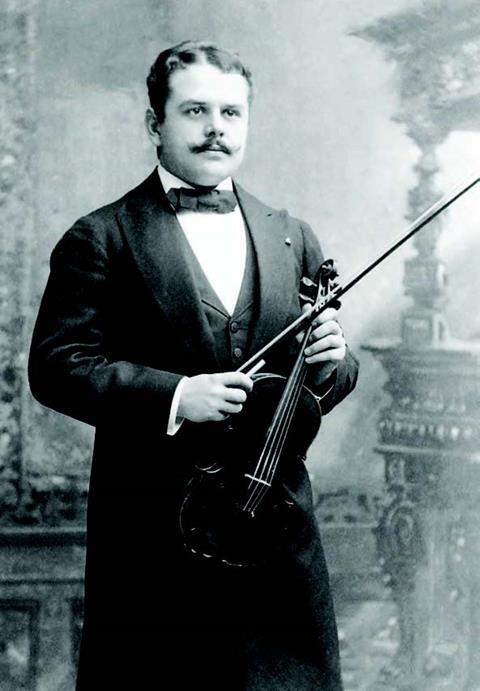
Browsing through copies of The Strad from a century or so ago can be very nostalgic, especially if you read the ‘Violinists at Home and Abroad’ column. Written by ‘Gamba’, it is thronged with players who at the time were emerging talents, or already enjoying public esteem. Sadly, some once-familiar names have been forgotten – not because they deserved oblivion, but for reasons of bad luck, bad timing or bad judgement. Here I try to resurrect a few of them who can be heard on recordings.
A very deserving ‘Russian’ violinist is Karol Gregorowicz (1867–1921), whose name has come down to us in various forms. Born in St Petersburg to Polish parents, he studied with his father and Vassily Bezekirsky. After his 1886 Berlin debut he had a brilliant international career and fi rst came to Britain in 1897, returning every year from 1910 as leader of the famed St Petersburg Quartet. The First World War and the 1917 Revolution kept him at home and he died mysteriously while trying to escape to the West. His 1909 records show a fabulous fi ddler in the 19th-century style, with slim, focused tone, impeccable legato and fl uid technique. Wieniawski’s ‘Obertass’ Mazurka and Souvenir de Moscou are precious links with the composer, who befriended the young Gregorowicz and, had he not died, would have taught the lad full-time.
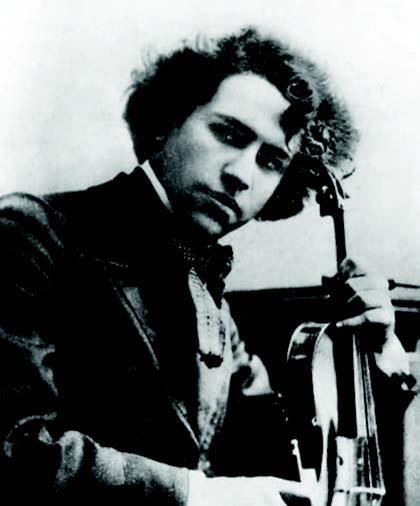
Whereas many Russian artists fled after the events of 1917, Mikhail Erdenko (1886–1940) embraced the new regime: he fi rst established his revolutionary credentials when the Tsar exiled him to the north after the 1905 uprising and, encouraged by the novelist Leo Tolstoy, he spent the time giving concerts for working people. A pupil of Jan Hrˇímalý, Erdenko took the 1904 Moscow Conservatoire gold medal and in 1910 won the competition marking Hrˇímalý’s 40 years as a teacher. That year and the next he travelled abroad, absorbing the infl uence of Fritz Kreisler – whose pieces he played beautifully – and studying with Eugène Ysaÿe. After 1917 Erdenko helped to reorganise musical education and get concert life going again. His records, some made in Japan and Poland, include a few of his own transcriptions. Two LPs issued by Melodiya in 1988 – one of 1914 discs, one of electric recordings from 1926–34 – confi rm his reputation as a sensitive virtuoso who sought to raise the level of popular taste, rather than pandering to it. One of his warhorses was his rearrangement of the Aliabiev–Vieuxtemps ‘Nightingale’, a tour de force. In addition to his technical skill, Erdenko had charm, not a quality often associated with the Russian school, and his delicate vibrato, perhaps acquired from Ysaÿe, loosened only slightly with the passing years.
Joseph Szigeti’s memoirs contain a sad list: ‘The fact that players of the first decade of our century, like Marteau, Joan Manén, Felix Berber, César Thomson, Arrigo Serato, and no doubt others, could not take roots in the United States, could not build up a following that would have enabled them to resume – after World War I – where they had left off, bears out, I think, my observation that a new ideal of beauty in violin-playing was being formulated around that time and that those whose style did not develop toward this new trend had little chance of maintaining their hold.’ Of his list, two can be heard on disc. Henri Marteau (1874–1934), a child prodigy, should have melded the French and German styles as comprehensively as Carl Flesch, as he was the son of a French violinist and a German pianist who had studied with Clara Schumann. Taking up violin at the age of fi ve, he came to the notice of Camillo Sivori, who gave him an instrument. Studies with August Bünzli (a Swiss violinist who had studied with Bernhard Molique) and Hubert Léonard led to his playing Bruch’s G minor Concerto under Hans Richter in Vienna in 1884. In 1888 came his London debut with Richter, and within a year of entering Jules Garcin’s Paris Conservatoire class in 1891, he took a fi rst prize, also studying composition with Théodore Dubois.

Up to 1914, Marteau rode high as soloist, quartet leader, composer and teacher of the violin masterclass at the Berlin Hochschule, Joachim’s old job. Early in World War I he fell foul of the German authorities: though resident in Bavaria, he held French nationality, was a lieutenant in the French army reserve and as recently as 1911 had taken part in manoeuvres. Interned for four months in 1914, he was released in 1915 but allowed to teach only from his home. In 1916 he and his German wife were arrested on suspicion of spying and separately imprisoned for months. This affair alienated Marteau’s German audiences, and from 1920 he travelled on a Swedish diplomatic passport. He was the fi rst violinist to record a complete Bach solo work, the E major Partita, in 1912–13. Very good it is, too, and the music suits his default mode of playing – despite his French background, Marteau often used virtually no vibrato, and when he did vibrate, the beat tended to be slow. That apart, he was a highly musical player, stylish in Mozart at a time when that was rare.
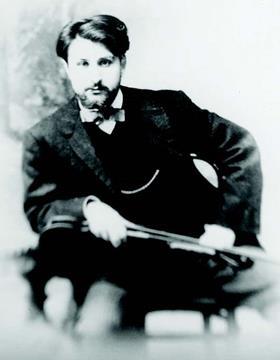
The Catalan violinist and composer Joan Manén (1883–1971) circled the world five times and made a lot of records in the acoustic era, but none in the electrical era from 1925. He started solfège and piano with his father at three and violin at fi ve, giving a recital at seven when he was also touring Spain as a wunderkind pianist–conductor. He made his US debut at nine and conducted a concert in Argentina at ten. At 13 he began to concentrate on violin, studying in Barcelona with Clemente Ibarguren, a former pupil of Jean-Delphin Alard, and producing his fi rst compositions. In 1898 he started touring, and in the years before the First World War the dark, bearded Manén – whom Henry Wood thought resembled a Velázquez portrait – was among the best-known fi ddlers, exuding charisma. He made his London debut in 1910 with Mozart’s D major Concerto, and two years later took the Queen’s Hall by storm with that Mozart, Saint-Saëns’s B minor, both Beethoven romances and his own Introduction, Andante and Variations. He made the first recordings of the Beethoven, Mendelssohn and Bruch concertos. What we hear on record – in Sarasate’s Jota aragonesa or his own Lied – is a wonderfully fluent player, with superb intonation and a marvellous flautato E-string sound. But he is clearly from the 19th century, despite being only eight or nine years older than Szigeti and Adolf Busch. Manén popped up in America in the early 1950s, and live recordings show him still playing in that 19th-century manner, despite having his violin strung with metal. A 1954 radio tape finds him in full stylistic command of Sarasate’s Sérénade andalouse, even if his tuning is no longer spot on.

Ysaÿe inscribed his Sixth Solo Sonata to Manuel Quiroga (1892–1961), paying tribute to the dedicatee’s nationality with subtle Spanish touches. Sadly, Quiroga never played it in public, as his career was ended by a 1937 New York traffi c accident. Born in Pontevedra, Galicia, he studied at the Royal Conservatoire, Madrid, with José del Hierro, winning the Sarasate Prize in 1911, before going to Jules Boucherit at the Paris Conservatoire. He was a success in the Concerts Lamoureux and made an acclaimed tour of the US. In the 1920s he and José Iturbi began their sonata collaboration. The modest Quiroga was already tending to concentrate on composition when his accident occurred. In pieces by Sarasate or himself, such as his sinuous Spanish Dance, we hear responsive rhythmic accentuation, piquant ornamentation and virtually no vibrato in the bright, clear tone – when vibrato is used, we are not far from the café ambience in which Quiroga played as a boy.
Read: ‘Music is part of our existence, even under shell-fire’: String players of the Great War
Read: Great string players of the past: Violinist Bronislaw Huberman
Any postcard collector knows how popular Marie Hall (1884–1956) was, but initially this Tynesider had to busk to pay for lessons. Eventually she reached Otakar Ševčík in Prague, making her debut there in 1902 with her teacher’s Amati. One of Britain’s best-known soloists until her career tailed off in the 1920s, she made only acoustic records: Elgar, one of her teachers, specially cut his Violin Concerto for her and conducted the recording. A refreshing, direct player, she performs Mendelssohn’s Concerto fi nale and Sarasate’s Jota aragonesa on her 1703 ‘Viotti’ Stradivari with splendid attack, dash, rhythm and style. Very different was May Harrison (1890–1959), schooled in the Franco–Belgian style by E.F. Arbos and Achille Rivarde at London’s Royal College of Music, although she had three months with Leopold Auer in 1908. Amazingly gifted, in 1919 she learnt the Elgar Concerto in two weeks. I find her more sympathetic than her cellist sister Beatrice, but she made only one commercial recording, Delius’s First Sonata with Arnold Bax at the piano. They capture its unique ebb and fl ow, Harrison’s eloquent, expressive slides on her 1742 Guarneri ‘del Gesù’ helping to convey its perfumed Romanticism. A few live recordings confirm what an artist she was.
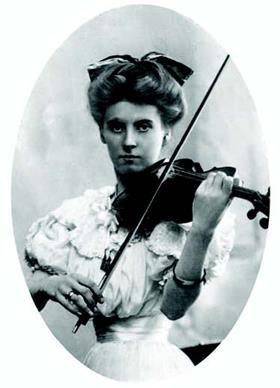
In her heyday, Renée Chemet (1888–?) from Boulogne toured more widely than any other female violinist and was the acme of chic – Henry Wood thought her ‘charming and stylish’. She studied with Henri Berthelier at the Paris Conservatoire, becoming soloist of the Concerts Colonne before embarking on her travels. After her US debut in 1921 she was spoken of as the ‘French Kreisler’. In 1932 she forsook Europe for Japan – and all we know of her later life is that she was back in Paris by 1947. Though her slightly nervous vibrato was not to all tastes, and other aspects of her left-hand technique were criticised, she took her pleasing platform manner into the recording studio. She brings rare improvisatory fl air and cherishable artistry to parts of Lalo’s First Concerto and Symphonie espagnole, Tchaikovsky’s Nocturne and Wieniawski’s Polonaise brillante in A major.
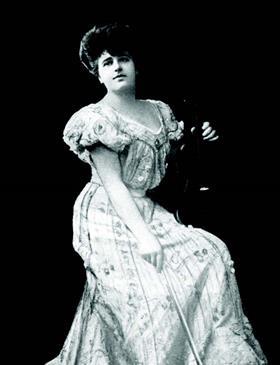
One of the few Ysaÿe pupils to make an impact as a concert artist was Brussels-born Alfred Dubois (1898–1949), as fine a player as his pupil Arthur Grumiaux. He won the Vieuxtemps Prize in 1920, from 1925 played in the Trio de la Cour de Belgique, with Émile Bosquet and Maurice Dambois, formed a superb sonata duo with pianist Marcel Maas and was a busy soloist. From 1927 he taught at the Royal Conservatoire in his home city. His international career was just blossoming when the Second World War came and he died too early. Among his beautiful records are versions of the Debussy and Franck sonatas, with Maas, which have rarely been equalled.
According to legend, the Parisian violinist Miguel Candela (1914–?) gave up his career after hearing Jascha Heifetz –a shame because he had unique qualities. First taught by his father Vincent, leader of the Paris Opéra Orchestra, at the Conservatoire from 1926 he studied with quartet leader Joseph Calvet, then with Remy. He toured widely, including America, was the fi rst to record Saint-Saëns’s B minor Concerto and opened a music school in Paris. He made some records with the pianist and composer Joaquín Nin – their recording of his Chants d’espagne is available on YouTube. Candela brings a touch of bel canto to a Tartini sonata movement, the tone carried as if on the breath: the seamless vibrato is delicately adjusted to create an impression of light and shade. It all has the grace and spontaneity of the Franco–Belgian school at its best, as has his version of Poldini’s Poupée valsante.
Read: Twisted History: The female violinists and the Brahms concerto
Read: How a forgotten chamber masterpiece finally saw the light
The viola had its Kreisler in Lionel Tertis but its most singular old-world exponent was the Czech player Ladislav Cˇerný (1891–1975), a man of Falstaffi an girth and personality. Schooled in Ševcˇík’s violin method by the master’s assistant Jindrˇich Bastarˇ, after World War I Cˇerný became fascinated by viola timbre and devoted his life to propagating it. Friendly with Hindemith, he influenced the composer’s great Sonata for solo viola op.25 no.1 – it was his idea to play the fourth movement furiously fast. From 1920 to the 1950s he ran the Prague Quartet but he then made solo records. In Harold in Italy, the Byronic introspection of the character is fully realised; in Britten’s Lachrymae, the theme’s appearance at the end has unparalleled poignancy; and Reger’s G minor solo Suite is made to sound like the profound masterpiece it is. Cˇerný recorded several Hindemith works including the Solo Sonata dedicated to him. It gets a performance of immense conviction, tremendous power and not a little virtuosity, more inward in the slower sections than the composer’s own interpretation.
Read: Great string players of the past: Cellist Pablo Casals
Read: Great string players of the past: Joshua Bell on Eugène Ysaÿe
Finally, two English cellists. The first recording star of the cello was W.H. Squire (1871–1963). Starting in 1901, we can trace his development from a virtually vibrato-less player to one with a beautiful, warm tone. Born in Ross-on-Wye, Herefordshire, he had music lessons from his amateur violinist father and at five took up the cello to complete the family quartet. On a scholarship to the Royal College, from 1883 he studied cello with Edward Howell, chamber music with Henry Holmes and composition with Hubert Parry. Later, Carlo Alfredo Piatti gave him cello lessons. He made his debut in chamber music with Albéniz at St James’s Hall, London, and in 1894 played Saint-Saëns’s A minor Concerto at the Crystal Palace under August Manns. From 1895 to 1899 he was principal cellist at the Royal Opera, from 1897 he fi lled the same position at the Queen’s Hall and he played in most London orchestras, teaching at the Royal College (1898–1917) and the Guildhall School (1911–1917). Fauré’s Sicilienne was dedicated to him, and Squire provided cellists with many short pieces of his own. Among his myriad records are the Saint-Saëns A minor and Elgar concertos. His arrangement of Dunkler’s Humoresque, recorded in 1917 and 1928, has marvellous sound effects, pizzicatos and glissandos, and is a technical tour de force, played with wit and élan. Popper’s Tarantella is dazzling, Fauré’s Sicilienne essential listening.
Felix Salmond (1888–1952) was most influential in America. At home he is remembered, if at all, as the soloist in the ill-fated premiere of Elgar’s Concerto. Born in London into a musical family, as a boy he played the piano. He took up the cello at twelve with W.E. Whitehouse, privately and then from 1905 to 1909 at the Royal College. From 1907 he also had lessons with Édouard Jacobs in Brussels during the holidays. In 1909 he made his London debut at the Bechstein (now Wigmore) Hall, with his mother at the piano, and he soon began to appear with top orchestras in the Haydn D major and Dvorˇák concertos. Albert Sammons was his regular partner in Brahms’s ‘Double’ Concerto. In 1922 he toured the US and was so well received that he stayed on. When the institute that became the Juilliard School was opened in 1924, he was made head of the cello department and professor of chamber music, and from 1925 to 1942 he also headed the cello faculty at the Curtis Institute, Philadelphia. He laid great stress on beauty of sound and the simplest possible approach to bowing: this simplicity shines out from his records. They are not numerous but include some gems: Grieg’s To the Spring, the filler to his excellent Grieg Sonata, the Largo from Chopin’s Sonata and a Debussy transcription, the third movement of the Petite suite. At his best he had a noble tone.
This article appeared in the October 2013 issue of The Strad
All photos from the Tully Potter Collection
Read: Great violinists: Yehudi Menuhin
Read: Great Violinists: Eugène Ysaÿe
Read more Featured Stories like this in The Strad Playing Hub
The number one source for playing and teaching books, guides, CDs, calendars and back issues of the magazine.
In The Best of Technique you’ll discover the top playing tips of the world’s leading string players and teachers. It’s packed full of exercises for students, plus examples from the standard repertoire to show you how to integrate the technique into your playing.
The Strad’s Masterclass series brings together the finest string players with some of the greatest string works ever written. Always one of our most popular sections, Masterclass has been an invaluable aid to aspiring soloists, chamber musicians and string teachers since the 1990s.
This year’s calendar celebrates the top instruments played by members of the Australian Chamber Orchestra, Melbourne Symphony, Australian String Quartet and some of the country’s greatest soloists.













































No comments yet